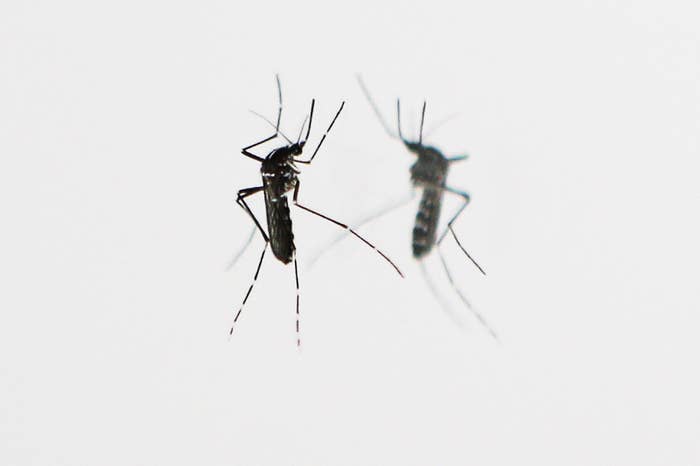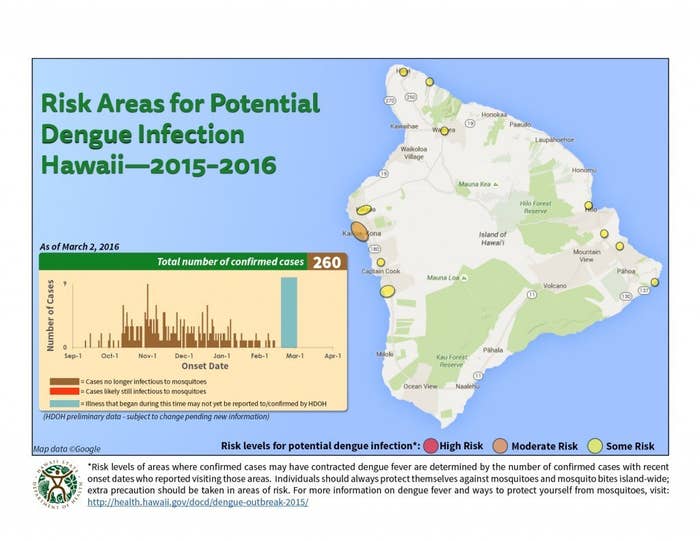
Hawaii Gov. David Ige declared a state of emergency on Feb. 12 to fight mosquito-borne diseases, including dengue fever, which has infected more than 250 people on the Big Island.
The state of emergency also covers the Zika virus. Although there have been no known cases in Hawaii, the state is concerned that the islands could be at risk because the same types of mosquitoes that carry dengue can carry Zika.
Hawaii's Department of Health will hire 10 new employees, including an entomologist who will be dedicated to the Big Island, with funds that the governor released, Director Virginia Pressler said to the Associated Press.
"We are doing everything we can to be prepared, to be proactive, to prevent vector-borne diseases here in Hawaii," Ige said.
Hawaii County Mayor Billy Kenoi also signed a state of emergency on Feb. 8 in order to reduce mosquito populations, increase outreach, and help people prevent being bitten.
Hawaii health officials said on March 10 that 261 people have been infected with dengue fever in the outbreak. The state Department of Health reported that of those infected with the mosquito-borne disease, 236 are Hawaii residents and 25 are visitors. Overall, 215 cases have involved adults; 46 have been children.
Officials said of those who have contracted the disease all but one person has completely recovered and are no longer infectious to mosquitoes.
The dengue fever cases date back to mid-September. Officials said most of the people have been infected on the Big Island in South Kona, especially Hookena and Honaunau, but that the whole island is at risk.
On Nov. 14, health officials said they sprayed an insecticide called Aqua Reslin that targets adult mosquitos around schools in the Kona and Hilo.

Another case of dengue fever has been confirmed on Oahu, but officials said the strain is not related to the cases on the Big Island.
Not everyone who has dengue fever shows symptoms, but those who do usually do within a week after transmission. They may include fever, joint pain, headaches, and rash.
This is the first outbreak in the Hawaiian Islands since 2011, when four people were infected on Oahu with a local strain of dengue fever. In 2001, an outbreak in Hawaii infected 153 people, predominately in East Maui.
Dengue is not normally present in Hawaii and occurs mainly in Asia, Africa, the Caribbean, and the South Pacific. It was likely transmitted via travelers coming through the islands, as happened in Hawaii in 2001 and 2011.
An official with the Centers for Disease Control and Prevention said Nov. that visitors to the islands should not cancel plans.
"This isn't a huge outbreak compared to elsewhere," said Dr. Lyle Petersen, director of the CDC's Division of Vector-Borne Diseases, on Nov. 20.
In comparison, Peterson said as many as 400 million people are infected yearly around the world. He said in Puerto Rico, where the disease is endemic, that 95% of the population has been infected at some point.
Health officials recommend that visitors and residents use mosquito repellent while outside, wear long-sleeved clothing and long pants, and avoid the outdoors during prime mosquito times that includes dawn and dusk.
Allie Wesenberg, who has 1.5 million subscribers to her and her boyfriend's YouTube channel, visited Hawaii in October and reportedly came down with the illness after returning home to Florida.
On YouTube, Wesenberg shared the story of her infection, describing the painful experience.
"Started to see all these crazy side effects," Wesenberg said. "My body started to ache... My bones hurt, it was awful... I genuinely thought I was going to die."
The couple said Wesenberg spent six days in the hospital before she was released.
